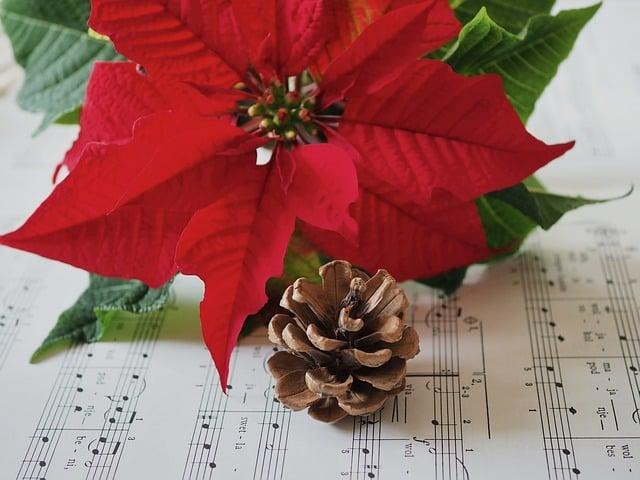In a small village, as winter’s chill settled in, the townsfolk gathered to prepare for the festive season. They spoke of a time of waiting, a period of hope. An old storyteller, with a twinkle in his eye, shared the tale of Advent—a word derived from the Latin “adventus,” meaning “coming.” He explained that it marked the anticipation of a great arrival. As candles flickered in the dim light, the villagers felt the warmth of hope, realizing that Advent was not just a countdown, but a celebration of the light returning to their lives.
Table of Contents
- The Historical Roots of Advent and Its Meaning
- Exploring the Symbolism Behind the Advent Season
- Traditions and Practices That Define Advent Today
- Embracing the Spirit of Advent in Modern Life
- Q&A

The Historical Roots of Advent and Its Meaning
The season we now know as Advent has its origins deeply rooted in early Christian traditions, emerging as a time of preparation and anticipation for the celebration of the birth of Jesus Christ. The term “Advent” itself is derived from the Latin word “adventus,” meaning “coming” or “arrival.” This reflects the dual focus of the season: the anticipation of Christ’s birth at Christmas and the expectation of His second coming. Historically, Advent was observed as a period of fasting and penance, similar to Lent, allowing believers to reflect on their faith and prepare their hearts for the joyous occasion of Christmas.
Over the centuries, the observance of Advent has evolved, incorporating various customs and practices that enrich its meaning. Traditionally, the season lasts for four weeks, beginning on the Sunday closest to November 30, the feast of St. Andrew. During this time, many Christians engage in activities such as lighting candles on an Advent wreath, which symbolizes hope, peace, joy, and love. Other common practices include:
- Daily devotionals to deepen spiritual reflection.
- Advent calendars that count down the days to Christmas.
- Charitable acts to embody the spirit of giving.
These traditions serve to remind the faithful of the significance of the season, fostering a sense of community and shared anticipation as they await the celebration of Christ’s birth.

Exploring the Symbolism Behind the Advent Season
The Advent season, a time of anticipation and preparation, is rich with symbolism that transcends its historical roots. At its core, Advent signifies the **coming** or **arrival** of something significant, particularly the birth of Jesus Christ. This period, spanning four weeks leading up to Christmas, invites individuals to reflect on themes of hope, peace, joy, and love. Each week of Advent is often associated with a specific virtue, encouraging believers to cultivate these qualities in their lives. The use of the Advent wreath, adorned with candles, serves as a visual representation of this journey, with each candle symbolizing a different aspect of the spiritual preparation for the celebration of Christ’s birth.
Moreover, the colors used during Advent carry profound meanings. The **purple** of the candles and decorations signifies **penitence** and **royalty**, reflecting the dual nature of Christ as both King and Savior. The **pink** candle, lit on the third Sunday, represents **joy**, marking a shift in the season as the faithful rejoice in the nearing celebration. Additionally, the **evergreen** of the wreath symbolizes **eternal life**, reminding us of the everlasting promise of hope that Advent embodies. Through these symbols, the season becomes a tapestry of meaning, inviting individuals to engage deeply with their faith and the transformative power of anticipation.
Traditions and Practices That Define Advent Today
Advent is a season rich with traditions that have evolved over centuries, each adding a unique layer to its significance. One of the most cherished practices is the **Advent wreath**, a circular arrangement of evergreen branches adorned with four candles. Each candle represents a week of Advent, with the lighting of each one symbolizing hope, peace, joy, and love. Families often gather around the wreath, sharing prayers and reflections, creating a warm atmosphere of anticipation as they count down to Christmas. Additionally, the **Advent calendar** has become a beloved tradition, offering daily surprises that build excitement and engagement throughout the season. Each door opened reveals a small treat or a meaningful scripture, fostering a sense of connection to the spiritual journey leading up to the celebration of Christ’s birth.
In many cultures, **caroling** has become synonymous with the Advent season, as groups of singers spread joy and goodwill through song. This practice not only enhances community spirit but also serves as a reminder of the joyous message of Christmas. Another significant tradition is the **Advent service**, where congregations come together for special worship sessions that focus on themes of hope and preparation. These services often include readings from scripture, prayers, and hymns that reflect the essence of the season. Through these diverse customs, Advent continues to be a time of reflection, community, and spiritual growth, inviting individuals to prepare their hearts for the coming of Christ.

Embracing the Spirit of Advent in Modern Life
In our fast-paced, technology-driven world, the essence of Advent can often feel overshadowed by the hustle and bustle of daily life. Yet, this season invites us to pause and reflect, offering a unique opportunity to cultivate a deeper sense of connection with ourselves and those around us. By embracing the spirit of Advent, we can transform our modern routines into moments of mindfulness and gratitude. Consider incorporating simple practices into your daily life, such as:
- Daily Reflection: Set aside a few minutes each day to contemplate your thoughts and feelings, fostering a sense of inner peace.
- Acts of Kindness: Engage in small, meaningful gestures towards others, reinforcing the importance of community and compassion.
- Intentional Time with Loved Ones: Dedicate time to connect with family and friends, creating cherished memories that enrich your relationships.
Moreover, Advent serves as a reminder to embrace the beauty of anticipation and hope. In a world that often prioritizes instant gratification, the season encourages us to slow down and appreciate the journey rather than just the destination. By integrating Advent’s themes into our lives, we can foster a sense of purpose and joy. Some ways to embody this spirit include:
- Creating Traditions: Establish rituals that resonate with you, whether it’s lighting candles, sharing stories, or preparing special meals.
- Mindful Consumption: Reflect on your purchases and choices, opting for sustainable and meaningful gifts that align with your values.
- Gratitude Journaling: Keep a journal to document what you are thankful for each day, enhancing your awareness of life’s blessings.
Q&A
-
What does the term “Advent” mean?
Advent comes from the Latin word adventus, meaning “coming” or “arrival.” It signifies the anticipation of the arrival of Jesus Christ at Christmas.
-
When does Advent begin?
Advent begins on the fourth Sunday before Christmas and lasts until Christmas Eve. This period marks the start of the Christian liturgical year.
-
Why is Advent celebrated?
Advent is celebrated as a time of preparation and reflection. It encourages believers to prepare their hearts and minds for the celebration of Christ’s birth.
-
What are some traditions associated with Advent?
Common traditions include the use of Advent calendars, lighting Advent candles, and daily prayers or reflections to mark the days leading up to Christmas.
As we conclude our exploration of the term “Advent,” we uncover a rich tapestry of history and meaning. This season invites us to reflect, anticipate, and prepare, reminding us that every ending holds the promise of a new beginning.




